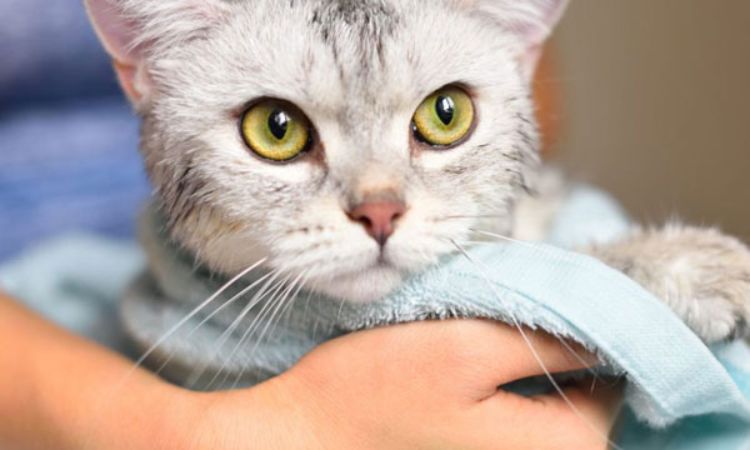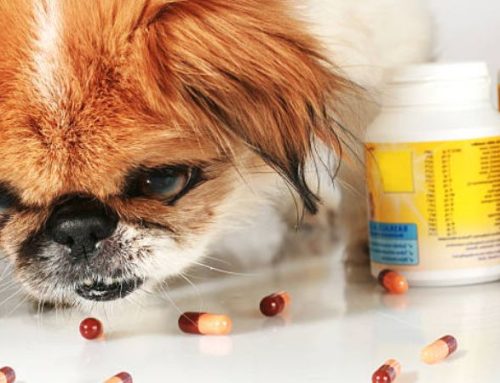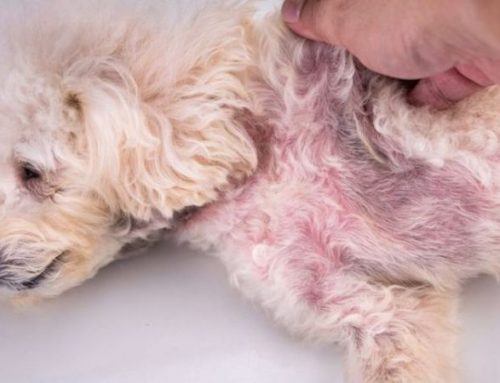Bringing new kittens into the world is a messy yet beautiful experience for any cat mom. As you admire the tiny, squeaky bundles nestled beside her, you might also notice that she’s not quite as clean as usual. Before you reach for the shampoo, though, it’s important to know when it’s actually safe to bathe a cat after giving birth and how to do it without stressing her or her newborns.
Understanding the Cat’s Postpartum Condition
After giving birth, a mother cat’s body undergoes significant changes as it transitions from pregnancy to nursing. It’s common for her to appear tired, weak, or slightly messy in the first few days. She may have vaginal discharge for up to a week, and her mammary glands will become swollen as milk production increases. During this recovery stage, her energy levels may fluctuate, and she’ll need a warm, quiet environment free from stress. Proper nutrition is vital high-calorie, high-protein foods such as kitten formula or quality kitten food will help her regain strength and support lactation. Closely monitoring her for any signs of infection such as fever, loss of appetite, lethargy, or foul-smelling discharge is crucial, as postpartum complications like mastitis or uterine infection can develop quickly.

Cats are instinctively clean animals, and shortly after birth, the mother cat will begin to groom herself and her kittens. This natural grooming helps remove blood, birth fluids, and other residues from their bodies, keeping the nest hygienic and stimulating circulation in the kittens. It’s best not to interfere too much during this stage avoid bathing her, as water exposure can introduce infection while her body is still recovering and her cervix remains open. If she appears particularly dirty, gently wiping the soiled areas with a warm, damp cloth is sufficient. Allowing her to handle most of the cleaning herself encourages her natural maternal behaviors and reduces stress.
Scent plays an essential role in the bond between a mother cat and her kittens. Through grooming, the queen transfers her unique scent to each kitten, helping her identify them and strengthening their emotional connection. Likewise, the kittens rely on her smell for comfort and security, especially in the first few weeks when their senses are still developing. Interfering with this scent by bathing the mother or handling the kittens too early can confuse her and, in some cases, lead to rejection. For this reason, it’s best to minimize handling during the first two weeks and allow natural bonding to take place through grooming, warmth, and scent recognition.
Recommended Waiting Period Before Bathing
It’s generally recommended to wait at least 2 to 3 days after your cat has given birth before considering a bath. During this time, her body is still recovering, and the cervix remains partially open, making her more vulnerable to infections if exposed to water or cleaning agents. Bathing too soon can also cause unnecessary stress, which may affect milk production and disrupt the mother’s natural bonding with her kittens.
For optimal safety, many veterinarians advise waiting one to two weeks, or even longer, before giving your cat a full bath—unless there’s a medical or hygiene emergency. This extended waiting period ensures that her uterus has closed completely, her strength has returned, and her kittens are stable and feeding well. In the meantime, you can help her stay clean by gently wiping away any dirt or discharge with a warm, damp cloth, focusing only on necessary areas.
When and How to Clean the Cat Before Bathing
In the early postpartum period, it is generally not recommended to give a full bath to a mother cat. Her body is still recovering from birth, her cervix may remain open for the first 2–3 days, and she is at risk of infection if exposed to water and soap too soon. Additionally, bathing her too early can stress the mother, potentially interfering with her milk production and natural bonding with her kittens.
Instead, you can perform spot cleaning using a warm, damp cloth. Focus only on areas that appear dirty or soiled, such as the belly, rear, or fur around the nipples, where birth fluids or urine may have accumulated. Gently wipe these areas to remove debris, taking care not to scrub and avoiding harsh soaps or detergents. This approach allows your cat to maintain her natural scent, which is essential for her kittens to recognize and bond with her.
When cleaning:
- Use lukewarm water, as cold water can be uncomfortable or even dangerous for a postpartum cat.
- Work gently and quietly to avoid startling her. Speak softly to reassure her during the process.
- Ensure the mother cat is in a warm, safe, and private environment while you clean her. Avoid handling the kittens at the same time unless necessary, as this can stress both mother and kittens.
- Dry her immediately with a soft towel, keeping her warm throughout the cleaning.
By relying on spot cleaning with a damp cloth, you can maintain hygiene for your mother cat without risking her health or disturbing the early bonding process with her kittens. Full baths should only be introduced after at least 2–3 days, and preferably when the kittens are slightly older, the mother is stable, and the environment is quiet and controlled.

How to Bathe the Cat Safely After the Waiting Period
1. Prepare the Environment to Minimize Stress
Stress can disrupt a mother cat’s milk production and her natural bonding with her kittens. To minimize stress during bathing:
- Choose a quiet, warm room away from other pets, children, or loud noises.
- Gather all supplies ahead of time: lukewarm water, gentle, cat-safe shampoo, soft towels, and a brush or comb.
- Keep the bathing area slip-free by placing a towel or mat at the bottom of the sink or tub.
- Ensure the room temperature is comfortable cats are more sensitive to cold after giving birth.
2. Groom Before Bathing
Before introducing water, spend a few minutes on pre-bath grooming:
- Brush her coat gently to remove loose fur, tangles, and debris. This reduces the amount of dirt that can get wet during the bath and helps prevent matting.
- Trim nails carefully to minimize the risk of scratches if the cat becomes nervous or tries to struggle.
- Brushing and trimming also gives the cat a chance to adjust to your handling, making the bath less stressful.
3. Use Lukewarm Water and Gentle Cat-Safe Shampoo
- Fill a sink or basin with lukewarm water, ensuring it is neither too hot nor too cold. A comfortable temperature is critical to prevent shock or discomfort.
- Wet your cat slowly, starting from the back or sides, avoiding the head at first.
- Apply a small amount of gentle, cat-safe shampoo, preferably one recommended by your veterinarian, and lather lightly.
- Avoid getting shampoo near her eyes, ears, and mouth, as these areas are sensitive.
- Rinse thoroughly to remove all traces of shampoo, as leftover soap can irritate the skin or be harmful if licked.
4. Dry Carefully and Keep Warm
- Use a soft towel to gently pat the cat dry. Avoid rubbing vigorously, which can stress the mother or tangle her fur.
- Keep her in a warm, draft-free area until fully dry, as postpartum cats are more prone to getting chilled.
- You can also use a low-heat hair dryer on a quiet setting, but only if the cat tolerates it and the dryer is kept at a safe distance.
5. Monitor Her Behavior After Bathing
After the bath, watch for signs of stress or discomfort, such as excessive panting, hiding, or refusal to nurse. Allow the mother cat to reconnect with her kittens immediately, as bonding and nursing are crucial during this early stage.
Key Tips for a Safe Postpartum Bath
- Never force a bath if the cat is highly stressed; spot cleaning may be a safer alternative.
- Keep the session short to reduce stress.
- Ensure the kittens are in a warm, safe environment while the mother is being bathed.
By carefully preparing the environment, grooming beforehand, and using gentle techniques, you can safely bathe a postpartum cat without compromising her health, reducing stress, or disrupting the vital bond with her kittens.
Signs to Look Out For That Indicate Veterinary Advice is Needed
While many mother cats handle postnatal care naturally, it’s important to stay vigilant. Early detection of health or behavioral issues can make a huge difference for both the mother and her kittens. You should contact a veterinarian if you notice any of the following:

1. Unusual Discharge or Odor After Birth
- Foul-smelling vaginal discharge could indicate a uterine infection (metritis).
- Excessive bleeding beyond the first 24–48 hours is abnormal and requires immediate attention.
- Changes in milk such as clots, discoloration, or foul odor may signal mastitis, an infection of the mammary glands.
Prompt veterinary intervention can prevent serious complications, including systemic infection.
2. Excessive Dirtiness or Physical Health Concerns
- If the mother cat is consistently dirty or unkempt, this may indicate weakness, illness, or pain preventing her from grooming properly.
- Look for swollen or painful teats, lethargy, trembling, vomiting, or refusal to eat or drink.
- Ensure she is urinating and defecating normally; difficulty could indicate postpartum complications like hypocalcemia (milk fever) or urinary issues.
A cat struggling with cleanliness or showing physical distress may need medical support to recover fully and care for her kittens.
3. Behavioral Signs Like Stress or Neglect of Kittens
- Excessive aggression, anxiety, or restlessness in the mother cat can indicate stress or discomfort.
- If she ignores or rejects kittens, refuses to nurse, or moves them excessively without a clear reason, this is a red flag.
- Watch for signs of abnormal behavior in kittens, such as constant crying, weakness, or failure to gain weight, which may indicate neglect or insufficient nursing.
Behavioral issues can sometimes be linked to health problems, environmental stress, or a need for human intervention. Early assessment by a vet ensures both mother and litter receive the care they need.
Articles you may be interested in:
Regular observation of both the mother and her kittens is crucial in the postnatal period. Any signs of unusual discharge, poor hygiene, physical distress, or behavioral problems should prompt immediate veterinary advice to safeguard the health of your feline family.






